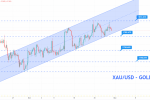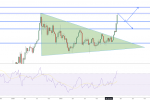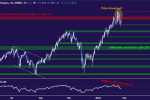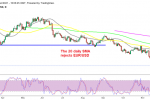AUD/USD Turns Bearish After the RBA Interest Rate and QE Decision
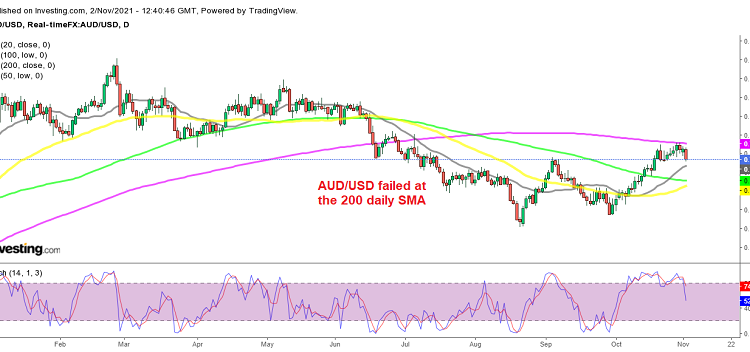
AUD/USD, The Australian economy has been suffering because of the prolonged lockdowns and other restrictions in the country. Although, the Australian Dollar hasn’t minded that much and the AUD/USD has been bullish in recent months. Economists have been expecting the Reserve Bank of Australia (RBA) to implement an interest rate hike, but the RBA hasn’t acted, and they have pledged to wait until February 2022, before making a decision on the QE and interest rates.
They did accept the fact that inflation has picked up, and that the economy is improving, while restrictions are easing. But, the Aussie weakened and the AUD/USD lost around 100 pips after being rejected by the 200 SMA (purple) on the daily chart. Below are the RBA takeaways from this morning’s statement and press conference.
Reserve Bank of Australia
- AUD/USD, Statement by Philip Lowe, Governor: Monetary Policy Decision
- The 10bps April 2024 yield target has been discontinued. Like they had a choice.
- RBA maintain the cash rate target at 10 basis points and the interest rate on Exchange Settlement balances at zero %
- Continues to purchase government securities at the rate of $4 billion a week, until at least mid-February 2022
- Discontinue the target of 10 basis points for the April 2024 Australian Government bond
- The Australian economy is recovering after the interruption caused by the Delta outbreak.
- As vaccination rates increase even further and restrictions are eased, the economy is expected to bounce back relatively quickly.
- The central forecast is for GDP growth of 3% over 2021 and 5½% and 2½% over the following two years.
- Important source of uncertainty continues to be the possibility of a further setback on the health front.
- The Delta outbreak caused hours worked in Australia to fall sharply, but a bounce-back is now underway.
- Many firms are now hiring, which will boost employment over coming months
- The central forecast is for the unemployment rate to trend lower over the next couple of years, reaching 4¼% at the end of 2022 and 4% at the end of 2023.
RBA Governor, Philip Lowe, Remarks in the Q&A Session
- RBA governor, Philip Lowe, made some remarks in the Q&A session
- Market pricing not consistent with our reaction function
- Extremely unlikely for inflation to jump well beyond RBA projections, warranting earlier rate hikes (he’s talking about that happening in 2022)
- Quite plausible that robust demand will slow and supply chain issues will resolve themselves over time, as global conditions pick up
- Wage growth still undesirable compared to elsewhere in the world
- Things will have to change dramatically for central scenario to be adjusted forward
- RBA central projections were prepared a week ago
- Current market pricing on rates has very little impact on RBA central projections
Further Remarks by Lowe
- There is still considerable uncertainty on wage growth
- If unemployment falls into the “low 4s” or below, we could see higher wages
- But there’s no assurance of that being the case, there is still uncertainty
- Not much discussion on housing today, more focused discussion on yields target
- Using rate hikes to combat rising house prices “not on our radar”
- Borrowers will have to be aware that rates will rise one day
That’s about if from Lowe today. There’s nothing hawkish, but that is reasonable considering that they have just started back-pedaling. Not only that; the market would’ve eaten them alive if there were any major signs after the recent events in bonds.
One interesting question is whether the shift in guidance means that the RBA is seeing a weakening in its tolerance on inflation. Lowe pretty much sidestepped that by reiterating the RBA’s central projection scenario and outlining the risks of inflation overshooting and undershooting. It’s subtle but it does say a lot in my view.


